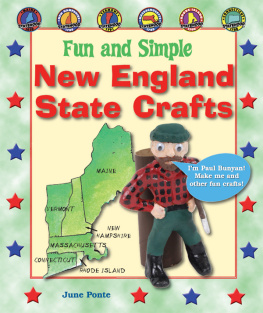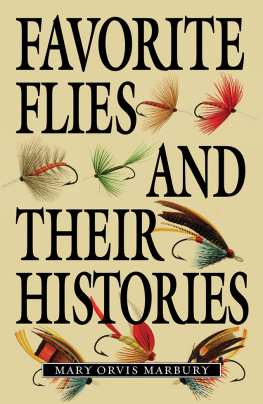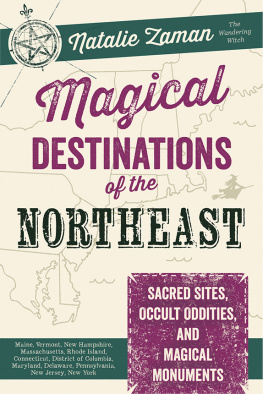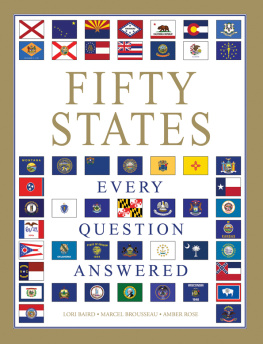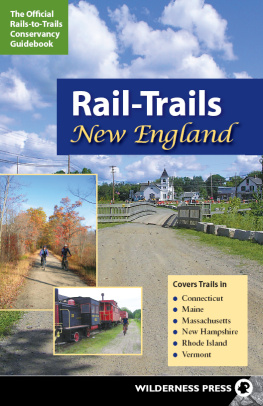Bregman - New England Neon
Here you can read online Bregman - New England Neon full text of the book (entire story) in english for free. Download pdf and epub, get meaning, cover and reviews about this ebook. City: Chicago, year: 2018, publisher: Arcadia Publishing Inc., genre: Home and family. Description of the work, (preface) as well as reviews are available. Best literature library LitArk.com created for fans of good reading and offers a wide selection of genres:
Romance novel
Science fiction
Adventure
Detective
Science
History
Home and family
Prose
Art
Politics
Computer
Non-fiction
Religion
Business
Children
Humor
Choose a favorite category and find really read worthwhile books. Enjoy immersion in the world of imagination, feel the emotions of the characters or learn something new for yourself, make an fascinating discovery.

- Book:New England Neon
- Author:
- Publisher:Arcadia Publishing Inc.
- Genre:
- Year:2018
- City:Chicago
- Rating:5 / 5
- Favourites:Add to favourites
- Your mark:
- 100
- 1
- 2
- 3
- 4
- 5
New England Neon: summary, description and annotation
We offer to read an annotation, description, summary or preface (depends on what the author of the book "New England Neon" wrote himself). If you haven't found the necessary information about the book — write in the comments, we will try to find it.
Bregman: author's other books
Who wrote New England Neon? Find out the surname, the name of the author of the book and a list of all author's works by series.
New England Neon — read online for free the complete book (whole text) full work
Below is the text of the book, divided by pages. System saving the place of the last page read, allows you to conveniently read the book "New England Neon" online for free, without having to search again every time where you left off. Put a bookmark, and you can go to the page where you finished reading at any time.
Font size:
Interval:
Bookmark:


FRONT COVER (clockwise from top left): Blanchards, Allston, Massachusetts (Authors collection); World-Famous State Line Market, Pelham, New Hampshire (Authors collection); Weirs Beach, Weirs Beach, New Hampshire (Authors collection); Lobster Pot, Provincetown, Massachusetts (Authors collection); Maine Idyll Motor Court, Freeport, Maine (Authors collection)
UPPER BACK COVER: Hi-Way Bowl, Plainfield, Connecticut (Authors collection)
LOWER BACK COVER (from left to right): Cindys Diner and Restaurant, North Scituate, Rhode Island (Authors collection); Shell, Cambridge, Massachusetts (Authors collection); Chelsea Royal Diner, West Brattleboro, Vermont (Authors collection)

SUSAN MARA BREGMAN

Copyright 2018 by Susan Mara Bregman
ISBN 978-1-4671-2923-7
Ebook ISBN 9781439665299
Published by Arcadia Publishing
Charleston, South Carolina
Library of Congress Control Number: 2017963440
For all general information, please contact Arcadia Publishing:
Telephone 843-853-2070
Fax 843-853-0044
E-mail
For customer service and orders:
Toll-Free 1-888-313-2665
Visit us on the Internet at www.arcadiapublishing.com
For the amazing community of sign geeks whose work inspires me every day.
CONTENTS
ACKNOWLEDGMENTS
This book was born on a streetcar. As I was heading into Boston on the MBTA Green Line, late in December 2015, a thought popped into my head: I want to write a book about neon signs in the new year. It took a little longer, but I hope it was worth the wait.
So, thank you, Massachusetts Bay Transportation Authority. Those long hours spent on the Green Line finally paid off.
Thank you to the many sign spotters who accompanied me on trips in southern New England: Nicki Rohloff, Tom Cohan, Liz Budington, Alisa Capaldi, Bob Brodesky, and Cindy Sragg. You waited patiently in your cars while I framed a shot, expertly navigated free-for-all rotaries, provided backup in sketchy neighborhoods, and risked food poisoning at least once. And a shout-out to my virtual sign spotters, Janet Cohan and Colleen Watson, both of whom delighted in sharing their discoveries from the road.
Thank you to the friends and family who listened to my endless obsessing (some might say whining) about this project and kept me centered, especially David Dao, Susan Compernolle, and Gloria Leipzig.
Thank you to Anne Quirk for her keen editorial eye (and inspired restaurant choices).
Thank you to the business owners, neon experts, and roadside enthusiasts who graciously answered my questions and filled in the blanks about the stories behind some of these signs. Librarians, archivists, and public officials also provided invaluable support, and I thank them for their resourcefulness in tracking down even the most obscure details.
Thank you to the team at Arcadia Publishing, including Caitrin Cunningham, Erin Vosgien, Ryan Easterling, and Katie Parry.
Finally, thank you to my old friend Tom Wagner, who was not around for this chapter in my life but always saw the best in me.
Except for a few clearly identified images, I took all the photographs in the book. Photographs indicated MIT in the text are from the Kepes-Lynch Photograph Collection (Copyright Massachusetts Institute of Technology; photograph by Nishan Bichajian). Photographs indicated City of Boston are from the Mayor John F. Collins records, Collection No. 0244.001, City of Boston Archives, Boston.
INTRODUCTION
The neon sign was born on January 19, 1915truly a red-letter day (and blue, green, and yellow). On that date, French inventor Georges Claude received a United States patent for his system of illuminating by luminescent tubes.
Neon lights are sealed tubes filled with certain gasesoften, but not always, neonwith an electrode at each end. The gas glows in the presence of an electrical current. The color of the light depends on the mix of elements inside the tube and the use of phosphors to line the glass. Neon gas glows a familiar red-orange, for example, while blue lights usually come from a combination of argon gas and mercury vapor.
Claude was not the first to work with electrified gasesother European scientists began experimenting with the process in the 19th centurybut he was the first to exploit its commercial possibilities.
A Packard car dealership in Los Angeles is often credited with installing the first commercial neon sign in America, less than a decade after Claude received his patent, in 1923. People were said to drive miles to marvel at the modern technology, popularly dubbed liquid fire, and police reportedly were called in to manage the crowds. But researchers have lately cast some doubt on that tale, proposing that neon signs instead made their debut in New York City or possibly San Francisco.
No matter where they started, neon signs quickly found their way to New England, where they lined main streets and back roads, illuminated theater marquees and doughnut shops, and directed patrons to gas stations and bowling alleys.
Today, some people dismiss neon signs as rusty roadside relics. But they are much more. Neon signs represent the intersection of art, science, and commerce.
Neon signs are individual works of art. They are handmade by artisans, known as sign benders, who painstakingly create one-of-a-kind displays.
Neon signs are magical, using science to transform downtowns and highways into extravagant showcases of color and motion.
Neon signs are time-travel machines, bringing us back to an era of mom-and-pop businesses where the waitress and the grill man knew their customers and how they liked their eggs.
Neon signs have tales to tell about the American dream, served up one doughnut at a time.
Neon signs remind us of special times: ice cream on a sweltering summer night, celebrations at a favorite restaurant, or first dates at a downtown movie palace.
In short, neon signs matter.
I covered thousands of miles in cars, trains, buses, and even ferries to research these signs. Sometimes I traveled with sign-spotting friends, and other times I was on my own. I tried the corned beef hash at as many diners as possible, saw an elephant on a rooftop in Maine, and traversed my first covered bridge in New Hampshire. But my favorite part of tracking down these vintage beauties, aside from encountering the magical words breakfast all day, was finding patterns and drawing connections.
Some themes crossed state lines. Enterprising Rhode Island restaurateurs created the New York System hot weiner. The Coney Island hot dog, a similar delicacy, settled into Worcester, Massachusetts. Perhaps in celebration of the regions long history, New England is full of Colonial Theaters. The oldest of these illuminated their venues with incandescent lights, but others had lovingly restored neon marquees.
Many diners employed a naming strategy to better attract women customers by feminizing their location. The Miss Florence Diner, known locally as Miss Flo, had the most exuberant sign, but I also encountered Miss Portland, the newly refurbished Miss Mendon (ne Miss Newport), and several of their non-neon sisters. Not surprisingly, many of the diners in New England were manufactured locally by the Worcester Lunch Car Company (WLCC). WLCC built 651 diners between 1906 and 1957, and each one had a serial number. I included those numbers in the text when available.
Next pageFont size:
Interval:
Bookmark:
Similar books «New England Neon»
Look at similar books to New England Neon. We have selected literature similar in name and meaning in the hope of providing readers with more options to find new, interesting, not yet read works.
Discussion, reviews of the book New England Neon and just readers' own opinions. Leave your comments, write what you think about the work, its meaning or the main characters. Specify what exactly you liked and what you didn't like, and why you think so.

